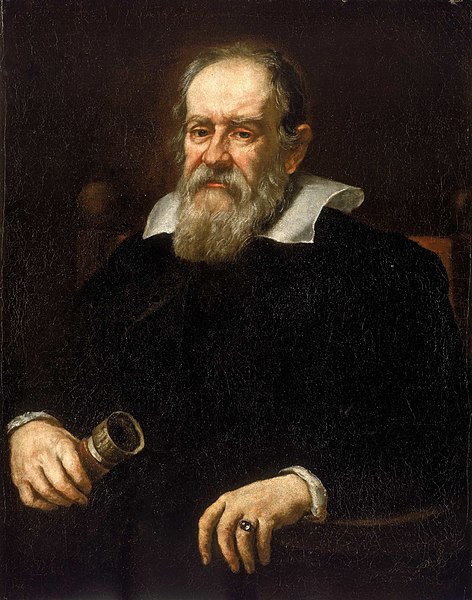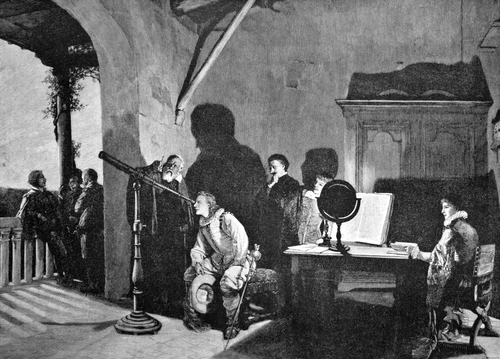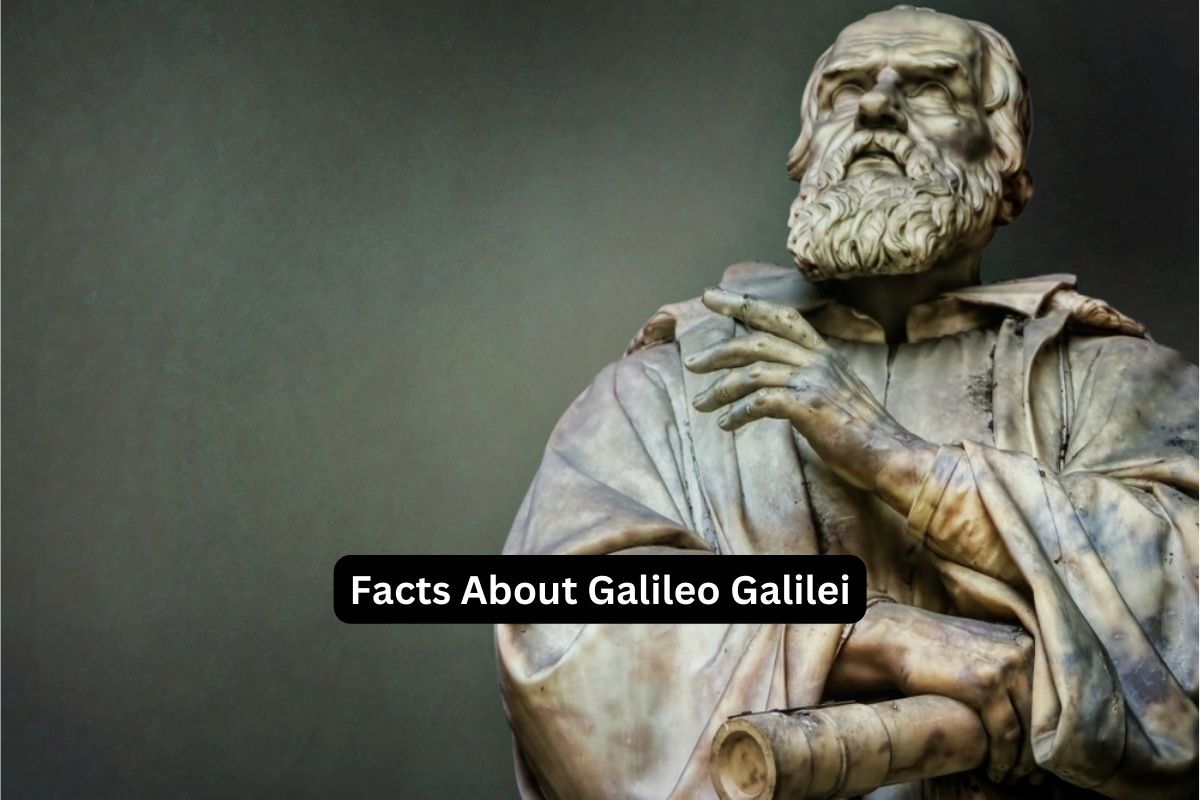Galileo Galilei, born in 1564 in Pisa, Italy, was a renowned astronomer, physicist, and mathematician. He is often hailed as the “father of modern observational astronomy” and the “father of modern science.”
Galileo’s groundbreaking discoveries and advancements revolutionized our understanding of the universe and laid the groundwork for the scientific method.
Despite facing opposition from the Catholic Church, Galileo’s work in fields such as astronomy, physics, and mathematics had a profound and lasting impact on scientific progress.
His contributions to the study of motion and the development of kinematics significantly shaped our understanding of how objects move. Galileo’s legacy as a scientific pioneer continues to inspire and influence scientists and thinkers to this day.
Galileo Galilei Facts
1. Galileo Galilei was born on February 15, 1564, in Pisa, Italy
Galileo Galilei was born on February 15, 1564, in Pisa, Italy. He came from a family of musicians, as his father was a musician and music theorist.
Also Read: Nicolaus Copernicus Timeline
Initially, Galileo intended to follow in his father’s footsteps and studied music, but his passion for mathematics and natural philosophy led him to pursue a career in science.

2. He is often referred to as the “father of modern observational astronomy” and the “father of modern science”
Galileo is often referred to as the “father of modern observational astronomy” and the “father of modern science” due to his groundbreaking contributions to these fields.
Also Read: Accomplishments of Galileo Galilei
He revolutionized the way we understand the universe by using telescopes for astronomical observations, challenging the prevailing geocentric view of the universe, and emphasizing the importance of empirical evidence in scientific inquiry.
3. Galileo made significant contributions to the fields of physics, astronomy, and mathematics
Galileo made significant contributions to physics, astronomy, and mathematics. In the field of physics, he conducted experiments and made important discoveries regarding the motion of objects.
He is particularly famous for his studies on falling bodies and the principles of inertia. Galileo’s work laid the foundation for Isaac Newton’s laws of motion and had a profound impact on the development of classical physics.
4. He discovered the four largest moons of Jupiter, now known as the Galilean moons
In astronomy, Galileo’s observations using his telescopes were groundbreaking. He discovered the four largest moons of Jupiter, which are now known as the Galilean moons (Io, Europa, Ganymede, and Callisto).
This discovery provided evidence that not all celestial bodies revolved around the Earth, supporting the heliocentric model proposed by Copernicus.
5. Galileo’s observations of the night sky supported the heliocentric model of the solar system
Galileo’s observations of the phases of Venus further challenged the geocentric model, as they showed that Venus orbits the Sun and not the Earth. These observations provided strong evidence for the heliocentric view of the solar system.
Also Read: Scientific Revolution Facts
In mathematics, Galileo made advancements in various fields. He developed a new field of study called kinematics, which focused on describing the motion of objects without considering the causes of that motion.
His work in mathematics also extended to the study of the properties of materials, such as his investigation of the strength of materials and the behavior of objects in motion.

6. His support for heliocentrism put him in conflict with the Catholic Church, leading to his trial and house arrest
Galileo’s support for the heliocentric model and his insistence on the evidence-based approach put him in conflict with the Catholic Church, which adhered to the geocentric view as supported by religious interpretations at the time.
In 1616, the Catholic Church issued a decree prohibiting the teaching or defense of Copernican heliocentrism. Galileo, however, continued to openly support the heliocentric model, which eventually led to his trial by the Inquisition.
In 1633, Galileo was brought before the Inquisition on charges of heresy for promoting heliocentrism. Despite defending his ideas and asserting their compatibility with Scripture, he was found guilty and sentenced to house arrest.
Galileo’s trial and subsequent condemnation became a symbol of the struggle between scientific progress and institutionalized dogma, with his case highlighting the tension between religion and science during the time of the Scientific Revolution.
His punishment confined him to his home in Arcetri for the rest of his life, but it did not deter his scientific pursuits.
7. Galileo developed the field of kinematics, focusing on the motion of objects
Galileo made significant contributions to the field of kinematics, which focuses on the study of motion without considering its causes. He developed new concepts and principles that formed the basis for our understanding of how objects move.
One of Galileo’s key contributions was the formulation of the law of inertia, also known as Galileo’s principle. He observed that objects tend to remain in their state of motion (either at rest or in uniform motion) unless acted upon by an external force.
This concept challenged the prevailing Aristotelian belief that objects required a continuous force to stay in motion.
Galileo also conducted experiments and made important discoveries related to the motion of falling bodies. He demonstrated that, in the absence of air resistance, all objects fall at the same rate regardless of their mass. This finding contradicted the Aristotelian view that heavier objects fall faster than lighter ones.
Additionally, Galileo investigated projectile motion and developed mathematical equations to describe the curved path of objects launched into the air. He studied the relationship between the initial velocity, angle of projection, and range of a projectile, providing a quantitative understanding of projectile motion.
Galileo’s work in kinematics laid the foundation for Isaac Newton’s laws of motion, which further revolutionized the field of physics. His emphasis on empirical observation, mathematical analysis, and the concept of inertia played a pivotal role in shaping our understanding of motion and paved the way for the development of classical mechanics.
8. He wrote important scientific works such as “Sidereus Nuncius” and “Dialogue Concerning the Two Chief World Systems”
Galileo was a prolific writer and published several influential works throughout his lifetime. One of his most famous works is “Sidereus Nuncius” (Starry Messenger), published in 1610.
In this book, Galileo described his observations of the Moon, the moons of Jupiter, and other celestial objects. The book was widely read and sparked great interest in his discoveries.
Another significant publication by Galileo is the “Dialogue Concerning the Two Chief World Systems,” published in 1632. This work presented a dialogue between three characters discussing the geocentric and heliocentric models of the universe.
The book, written in vernacular Italian rather than Latin, aimed to make the ideas more accessible to a broader audience. However, it also attracted the attention of the Inquisition and ultimately played a role in his trial and condemnation.
9. Galileo’s ideas had a profound impact on the Scientific Revolution and the development of the scientific method
Galileo’s ideas and discoveries had a profound impact on the Scientific Revolution and the development of the scientific method. He emphasized the importance of experimentation, observation, and mathematical analysis in understanding the natural world.
Galileo’s insistence on empirical evidence and his mathematical approach to describing the physical phenomena laid the foundation for the modern scientific method, which is still followed today.
His emphasis on the scientific method also helped shift the focus of scientific inquiry from philosophical speculation to empirical investigation. Galileo’s approach marked a significant departure from the dominant Aristotelian tradition and paved the way for the scientific advancements of subsequent centuries.
10. He passed away on January 8, 1642, in Arcetri, Italy, at the age of 77
Galileo Galilei passed away on January 8, 1642, in Arcetri, Italy, at the age of 77. Despite his confinement and the restrictions imposed on him, Galileo continued his scientific work during his time under house arrest. He focused on studies related to the physics of motion, particularly his investigation of the strength of materials and the behavior of objects in motion.
